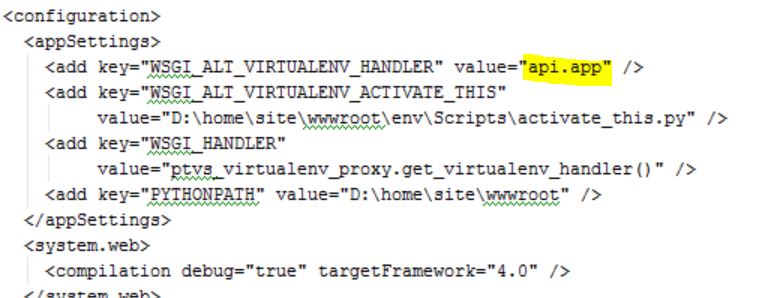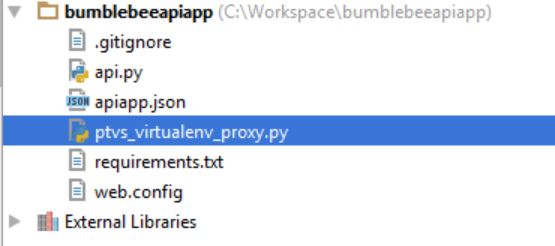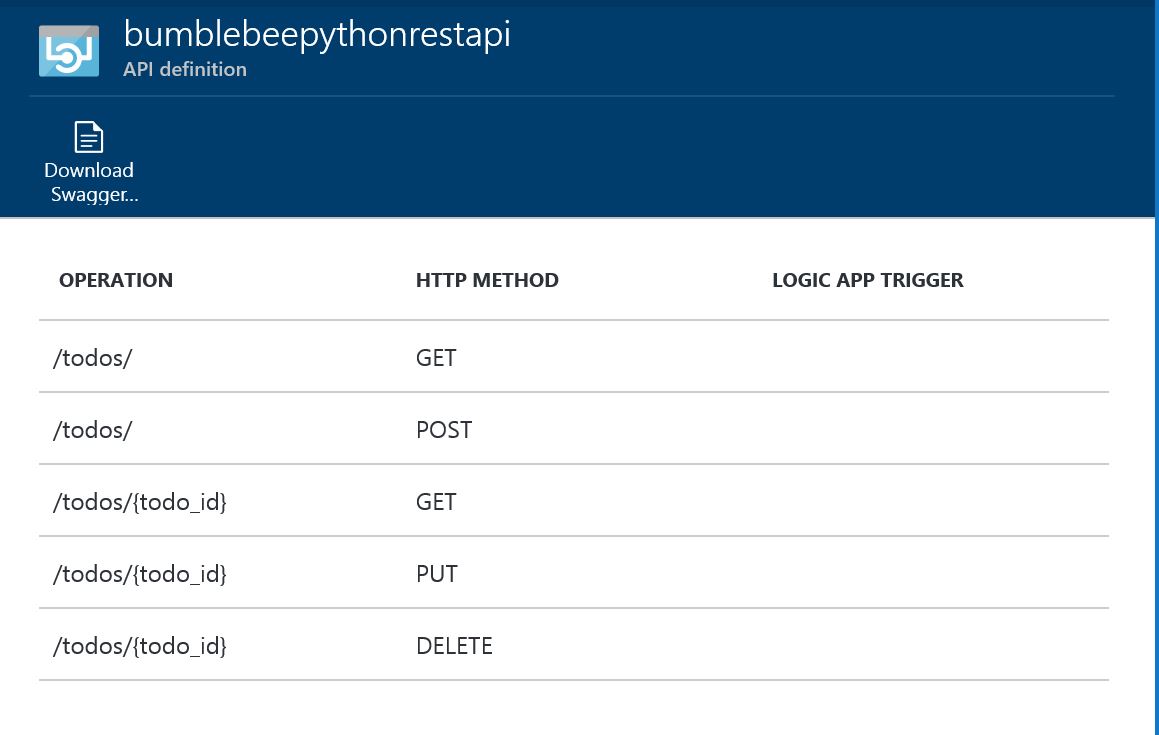Create a new Azure Apiapp in python supporting swagger 2.0
An API app is an App Service web app with additional features that enhance the experience of developing, deploying, publishing, consuming, managing, and monetizing RESTful web APIs.
For More information Please refer : https://azure.microsoft.com/en-us/documentation/articles/app-service-api-apps-why-best-platform/
This Blog would provide steps to create a sample Azure API APP in Python using Flask-restplus
1) Add a new virtual environment proxy file(ptvs_virtualenv_proxy.py).sample file is available @ https://azure.microsoft.com/en-us/documentation/articles/web-sites-python-configure/#virtual-environment-proxy
2) Create a requirements.txt file with below content. Find more details about package management @ https://azure.microsoft.com/en-us/documentation/articles/web-sites-python-configure/#package-management
flask-restplus==0.7.2
3) Get a sample flask-restplus code available @ http://flask-restplus.readthedocs.org/en/latest/example.html. I have placed my code in [api.py]
4) Create a new folder and add a web.config file in your local workspace. You can find a sample @ https://azure.microsoft.com/en-us/documentation/articles/web-sites-python-configure/#webconfig
Change value of WSGI_ALT_VIRTUALENV_HANDLER in web.config as required. I have mentioned it as api.app because my sample code was in api.py file with app as main method in it.
5) Create a new file apiapp.json at root folder
{
"$schema": "http://json-schema.org/schemas/2014-11-01/apiapp.json#",
"id": "Bumblebee",
"namespace": "microsoft.com",
"gateway": "2015-01-14",
"version": "1.9.0",
"title": "Bumblebee",
"summary": "",
"author_name": "",
"endpoints": {
"apiDefinition": "/swagger",
"status": null
}
}
6) At the end you would see below list of files
Please find more details on creating and deploying Azure API app at below link
https://azure.microsoft.com/en-us/documentation/articles/app-service-api-nodejs-api-app/
After deploying your app, you should be able to see app definition in portal as below





